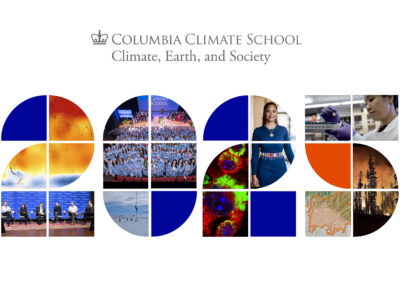“During one kayaking [trip] around the glacier, ice fell onto my kayak. I tried to save this one piece of glacier ice in my freezer. I watered it every day, trying to make it grow. Turns out I wanted to make a story,” said artist and filmmaker Jiabao Li of time spent in Alaska. Inspired by that trip, Jiabao created Once a Glacier, a 15-minute virtual reality (VR) film about a girl and her relationship with a glacier.
A work of climate fiction, Once a Glacier explores a world similar to our own—one with ice sheets that are disappearing as a casualty of climate change. The film traces the journey of a girl as she watches the glaciers around her slowly vanish. We follow her story, as a young girl who discovers the glacier, to her aging into an elderly woman who still protects the decades-old piece of the glacier in her freezer.

Jiabao uses VR technologies to try and cultivate a close connection between the audience and the world she creates. Unlike regular cinema films, VR gives viewers a fully immersive experience that detaches them from their physical surroundings, embedding them in a new world.
“You think of human life within a hundred [years], and glacial time in millions of years,” Jiabao said in an interview with GlacierHub. “Because of that, we can’t [see] glaciers shrinking. Virtual reality compresses time, so within a girl’s lifetime you can see the comparable disappearance of the glacier.”
Researchers agree that VR can be a valuable tool in reaching new audiences. “VR can influence users’ conceptual understanding of scale in a way that looking at things on a computer monitor doesn’t,” said Isabel Cordero, a polar research assistant at the Polar Geophysics and Glaciology group at the Lamont-Doherty Earth Observatory at Columbia University. “It’s one thing to tell someone that the Ross Ice Shelf in Antarctica is roughly the same size as Texas; and it’s another thing to show them just how much ice that actually is.”
Cordero, a scientist, has used VR as part of the research group’s Visualizing Ice Sheets in Extended Reality project (VISER). Part of their work includes making virtual models of ice sheets that can help people physically contextualize real-world processes and explore complex polar data sets in an interactive way.

In Once a Glacier, viewers have an opportunity to interact with the main character. For instance, viewers can water the piece of glacial ice in the woman’s fridge. In the end, the audience can virtually follow along as the piece of ice she so fervently cared for is auctioned off into a museum, hailed as the last glacier in the world.
“It’s one thing to tell someone that the Ross Ice Shelf in Antarctica is roughly the same size as Texas; and it’s another thing to show them just how much ice that actually is.”
– Isabel Cordero, Polar Geophysics and Glaciology group at the Lamont-Doherty Earth Observatory
Sound plays a critical role in the film. In Iñupiaq culture, glaciers carry memory through sound. The Iñupiaq are an Indigenous Peoples found across the Arctic who inspired Jiabao to create the grandmother character in the film, voiced by Carolyn Nahyoumaurak. While Western science focuses on observing the history of glaciers through ice cores (which can reveal past environmental and climate conditions), Jiabao focuses on the ambient sounds of the glaciers to center viewers in the present. In one part of the film, the audience kayaks with the main character through towering glaciers as cracking ice and breaking bubbles follow closely behind. To make the scenes as realistic as possible, her team recorded the sounds from real glaciers in Alaska. Voice acting is also important in the film; poetic narration reflecting the film’s main message.
“I am not alone,” the girl’s voice echoes as a poem is read in the film. “I am the keeper of frozen memory, brimming always, of time that should never end, of blue ice pure to its blue core. I am not alone.”
Science reveals the imminence of climate change, yet we still struggle to pass comprehensive policies and spur action. A new study argues the problem lies not in people’s perceptions of the urgency of climate change, but from a flaw in climate change messaging—we need to show people that “we are not alone.” Empathy is critical here, and VR films, by building close links between the audience and the characters, are one way to connect us with our fellow humans—and by extension our changing planet. Through VR technology, viewers can experience climate change in new ways that hopefully spur them to action.



